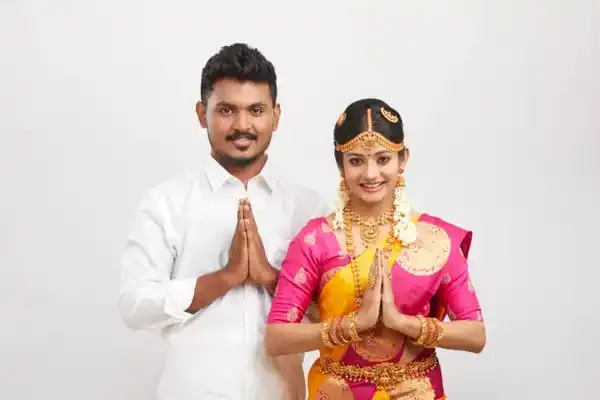Introduction
Indian traditional dress holds a rich tapestry of history, culture, and craftsmanship that reflects the diversity and vibrancy of the nation. From the intricate weaves of silk sarees to the majestic drapes of turbans, traditional attire in India reflects its deep-rooted traditions and evolving fashion sensibilities. This article delves into the enchanting world of Indian traditional dress, exploring its evolution, regional variations, cultural significance, and the impact of globalization on this timeless form of attire. Join us on a captivating journey through the colors, textures, and stories woven into the fabric of traditional Indian clothing.
Indian Traditional Dress
Indian traditional dress reflects the rich cultural heritage and diversity of the country. Each attire tells a story of tradition and craftsmanship, from vibrant sarees to elegant sherwanis. It holds deep historical and cultural significance, with each garment symbolizing different regions, communities, and customs. The attire not only showcases India's artistic prowess but also connects people to their roots and identities.
Indian clothing has ancient roots dating back to the Indus Valley Civilization, where intricate textiles and drapes were prevalent. Over centuries, traditional attire has evolved, blending tradition with modern styles.
The influence of colonialism and modernization brought about changes in Indian traditional attire. Western clothing styles merged with traditional garments, creating a fusion of cultures prevalent in today's Indian fashion landscape.
Regional Variations in Traditional Indian Clothing
i. North Indian Traditional Dress
North India boasts a colorful array of traditional attire, including the regal sherwani for men and vibrant lehengas for women, reflecting the royal heritage and craftsmanship of the region.
ii. South Indian Traditional Dress
South Indian traditional dress is known for its rich silk sarees like Kanjivaram and Kasavu, showcasing intricate designs and motifs that are unique to each state in the region.
iii. East Indian Traditional Dress
East India's traditional attire includes the graceful Assam silk sarees, traditional dhotis, and kurta for men, and exquisite handloom weaves that are a testament to the region's tradition of craftsmanship.
iv. West Indian Traditional Dress
West India embraces traditional attire like the vibrant bandhani sarees of Gujarat, the traditional dhoti-kurta ensemble, and the iconic Rajputana attire, reflecting the region's rich history and cultural diversity.
Significance of Traditional Dress in Indian Culture
i. Symbolism and Rituals Associated with Indian Attire
Indian traditional dress is deeply intertwined with symbolism and rituals, with each garment carrying auspicious meanings and cultural significance that are passed down through generations.
ii. Role of Traditional Dress in Festivals and Celebrations
Traditional attire plays a pivotal role in Indian festivals and celebrations, where people don their finest garments to mark auspicious occasions and showcase the splendor of Indian craftsmanship and cultural heritage.
Influence of Globalization on Indian Traditional Fashion
i. Fusion of Traditional and Western Styles
In the era of globalization, Indian traditional fashion has embraced a fusion of traditional and Western styles. From sarees paired with crop tops to kurtas with jeans, the fashion scene is all about mixing cultures like a sartorial cocktail.
ii. Global Reach of Indian Traditional Clothing
Thanks to globalization, Indian traditional clothing has found a global audience. With Bollywood celebrities sporting exquisite traditional outfits on international red carpets and fashion runways, Indian fashion has truly gone global, earning admirers worldwide.
Traditional Indian Garments for Men and Women
i. Women's Traditional Clothing
Women's traditional Indian clothing is a vibrant tapestry of sarees, salwar kameez, lehengas, and more. Each garment reflects the rich cultural heritage of India, with intricate embroidery and colorful fabrics stealing the spotlight.
ii. Men's Traditional Clothing
From dapper sherwanis and kurtas to casual dhotis and lungis, men's traditional Indian clothing exudes elegance and charm. Traditional outfits like the Nehru jacket have also gained popularity on both national and international fashion circuits.
Popular Fabrics and Embellishments in Traditional Indian Clothing
i. Types of Fabrics Used in Traditional Indian Attire
Silk, cotton, chiffon, and georgette are just a few of the fabrics that adorn traditional Indian attire. These fabrics offer comfort and a luxurious feel to the garments, making them a favorite among fashion enthusiasts.
ii. Traditional Embroidery and Embellishments
From intricate zari work to dazzling mirror work, traditional Indian clothing is a feast for the eyes when it comes to embroidery and embellishments. These intricate details add a touch of opulence and grandeur to the garments, making them a must-have in every fashionista's wardrobe.
Modern Interpretations and Trends in Indian Traditional Dress
i. Contemporary Designs in Traditional Indian Clothing
Modern designers are reimagining traditional Indian clothing with contemporary twists. Whether it's experimental draping techniques or innovative silhouettes, traditional outfits are getting a fresh makeover, appealing to a new generation of fashion lovers.
ii. Sustainable Practices in the Traditional Fashion Industry
With sustainability at the forefront of the fashion industry, traditional Indian clothing is also embracing eco-friendly practices. From using organic fabrics to promoting handloom weaves, the traditional fashion industry is moving towards a greener and more ethical approach, making fashion look good while doing good.
Conclusion
Indian traditional dress serves as a cornerstone of the country's cultural identity, embodying centuries-old traditions while adapting to the rhythms of modernity. As we celebrate the diverse tapestry of regional styles, intricate craftsmanship, and symbolic meanings woven into each garment, it becomes evident that traditional Indian clothing is not just about fashion – it is a living testament to the heritage and values that continue to shape the sartorial landscape of India. Let us continue to cherish and embrace the beauty and significance of Indian traditional dress, honoring the legacy passed down through generations and carrying it forward with pride and grace.









0 Comments